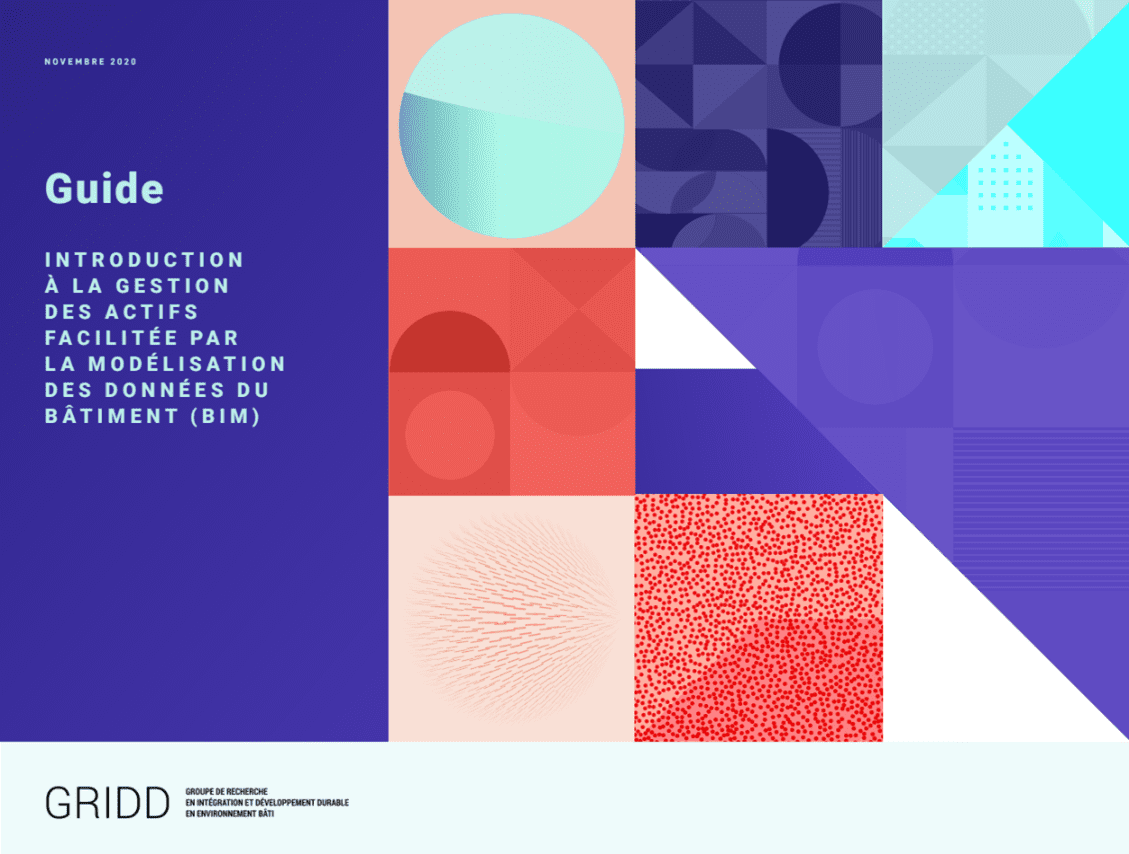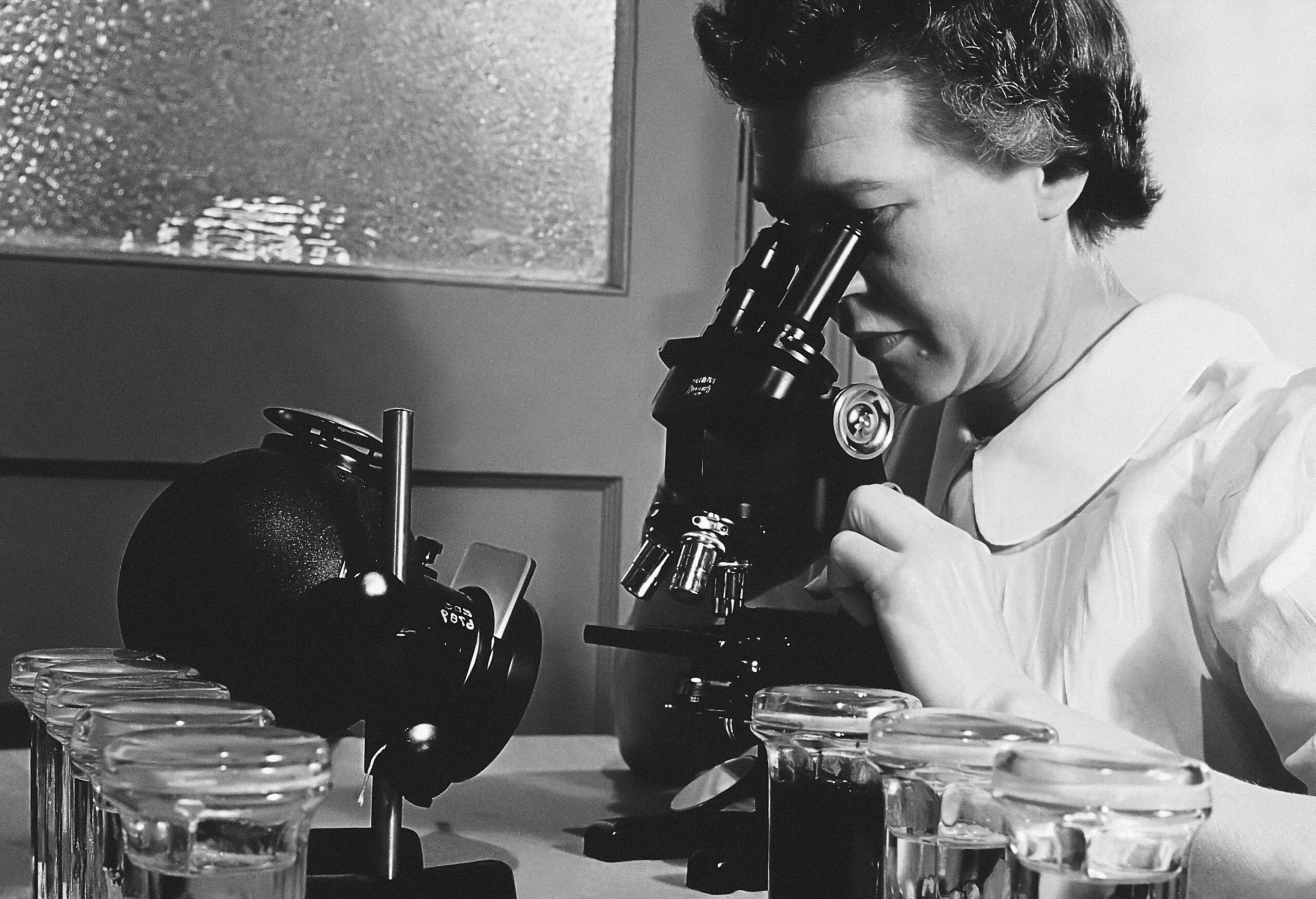Through the Initiative québécoise pour la construction 4.0 (IQC4.0), Groupe BIM du Québec and its partners have been working since 2018 to support the industry through the digital transition. Digital diagnostics are an important element of this implementation effort whose objective is to create action plans adapted to the practice and reality of each organization. While the first wave of diagnostics focused exclusively on a few cutting-edge companies, the second phase broadened the horizons by opening the diagnostics to all architecture, engineering, and construction (AEC) companies. The third wave welcomes a major industry player: clients.
Whether public or private in the institutional, health, education, infrastructure and transportation sectors, clients evolve in diverse and complex realities since operation and maintenance represent a fraction of their endeavours. The question then becomes how does one get an accurate and realistic snapshot of a client’s digital environment with a single diagnostic?
BIM AND CLIENTS
Exporting the impact of better infrastructure management
When the government released its BIM roadmap in August of 2021, we clearly saw that clients are at the vanguard of this program because they are a driving force behind the implementation of best practices. By being active both upstream and downstream of the fulfillment process, they are also responsible for a majority of the asset’s life cycle. This is why the consequences of a successful adoption of BIM by clients will surely reverberate in their organizations as well as throughout the industry.
And yet, managing their assets is only a small part of the concerns of organizations that double as clients. The mission of a hospital or a school is obviously to provide better care or education, and although it is undeniable that the direct environment contributes to a better quality of life, it is but one of the things these organizations need to address.
“Asset management departments are major information producers for other departments that cover all operational aspects from security and environmental quality to events and space rental, to name just a few. Optimizing information management in these departments has the potential to improve the associated services. In a hospital, for example, you can’t afford a power outage that will shut out the lights in operating rooms.”
Daniel Forgues, Professor — Construction Engineering Department at ÉTS
This, however, represents a shortfall since the brunt of BIM’s benefits occur in the operational phase.
A potential clients should exploit
For project owners, the benefits of using BIM are as well known as they are legion. In 2020, Groupe BIM du Québec — with the support of the Groupe de recherche en intégration du développement durable en environnement bâti (GRIDD) — published a guide for the implementation of BIM in asset management that read:
“Although BIM is generally applied to the design and construction phases, over 70% of the value of its benefits occurs during the operation phase. BIM generates savings of 2% to 3% of the asset’s cost over its entire life cycle (Price Waterhouse Coopers LLP).”

Guide d’introduction à la gestion des actifs — Le GRIDD, in association with CERACQ, ÉTS and Groupe BIM du Québec
However, the main issue when it comes to the adoption, use and requirement of BIM by clients is that it forces them to march to the industry’s drum.
“ It’s like a dance: all of us must move with the others while maintaining a balance between the industry’s needs, requirements and capacities. ”
Marianne Nguyen, Deputy Director — Engineering, In charges of the implementation of BIM at the Société de développement et de mise en valeur du Parc olympique
Unlike AEC firms who can implement BIM practices internally before adapting them to their business context, clients must consider the maturity level of their suppliers (professionals and contractors), as well as endeavour to push the industry forward by upgrading their own requirements and properly deploy BIM internally to leverage the BIM deliverables they are tasked with.
“ Awareness has to be raised regarding BIM is used for and how it is integrated in existing practices. When an asset manager receives the model, he must know what he can do with it, how to transfer the data initially, but also how to breathe life into it. ”
Daniel Forgues
So where do BIM diagnostics fit in this context?
DIAGNOSING A COMPLEX STRUCTURE
Clients, their place in the industry and integrating innovations in construction
Clients — mainly public ones — are differentiated from other industry players by a more complex structure, specialized services, a strong regulatory framework, and projects with multiple stakeholders. The built environments in which they evolve are numerous — from places of education to transportation infrastructures, and in all sectors —, so it becomes crucial to have accessible, structured and accurate information in order to make the right decision at the right time and to act proactively while maintaining resource management capabilities. Generally, services are split in two streams: the project stream and the operations and maintenance stream, which communicate with each other. Computer-assisted maintenance management (CMMS) has evolved in a technological environment specific to asset managers to help them manage asset information. While BIM has become very strong at the design level, the information system for asset management evolved in parallel. From the original build of the BIM model to asset management software such as Octopus, Guide TI, or Maximo, data extraction and transfer processes must be implemented.
The integration of BIM in the realm of clients also brings about changes in the human and organizational spheres. For example, the reception, use and maintenance of the model are new responsibilities and skills that need to be developed. Whether the solution comes through training or hiring, neither option should slow down operations too much. While SMEs enjoy more flexibility to adapt their positions, public contractors, for example, have to define or adapt certain job descriptions and make sure they are compliant with their human resources department and current regulations.
“ The Government’s BIM Roadmap is a huge implementation effort to introduce BIM in Québec’s infrastructure projects. It is crucial that public contractors carry out a diagnostic of their BIM skills as soon as possible to avoid being left behind by the changes that are coming. ”
Martin Lafleur, Executive Director — Groupe BIM du Québec
How is a diagnostic carried out for a client?
The IQC 4.0 assessment model, also known as the Québec BIM Competency Model (modèle de compétences BIM du Québec [MCBIMQ]), has been modified to be better suited to these realities. As is the case for SME diagnostics, diagnostics for clients aim at adapting BIM practices for each organization while keeping the formula similar, yet with a broader vision. The focus is placed on information management, interdepartmental communication and governance involvement. In the planned structure, the analysis is carried out at the macro level and at the services level in parallel. The goal is to analyze the internal processes of the departments as well as the procedures, communication and interdepartmental transfers.
First, the macro diagnostic that is scheduled for management over the course of three workshops is two-pronged:
- Aligning strategic and operational goals;
- Creating awareness about the scope of the digital transition, its importance and the level of mobilization required by the organization to achieve it.
Over the course of the macro diagnostic:
- Workshops 1 and 2 draw a portrait of the organization and what the integration of BIM involves. What are the concerns and challenges, and what are the needs and opportunities when it comes to using BIM?
- Workshop 3 — to be held, as much as possible, after workshops 1 to 3 below — is designed to align departmental and organizational BIM objectives
In parallel, a five-workshop diagnostic is planned for each department or according to the client’s needs and organizational structure. During the departmental diagnostic:
- Workshops 1 and 2 are used to paint a portrait of the department and define the objectives of BIM integration.
- Workshop 3 is focused on the analysis of the department’s internal and external processes, which will become the basis of workshop 4.
- Workshop 4 allows the auditor to choose and prioritize, along with the team, the BIM practices that will be implemented in the department according to the needs and opportunities identified during the previous workshops.
- Finally, workshop 5 is devoted to departmental training and competency enhancement.
Client Diagnostics have therefore been adapted to account for the internal resources available to the various departments and so that the BIM integration can be carried out in compliance with specific regulations. IT departments are invited to the workshops so they can bring their expertise in terms of equipment requirements and to report on the existing equipment. Similarly, human resources are also invited to participate in Workshop 5 which focuses on training and digital skills.
CASE STUDY
The adoption of BIM at the Olympic Park
BIM One has been involved in the Olympic Park’s BIM adoption project since 2021. The goal of this five-year implementation is to bring the Park’s teams to a level of competence that will allow them to be autonomous when managing BIM-supported projects while facilitating information access and linking the implementation to the various initiatives underway. Through all this, the Olympic Park’s Maintenance and Technical Services Department (direction de l’entretien et des services techniques [DEST]) participated in one of the first IQC 4.0 diagnostics for clients. The intention behind this initiative was to assess their competency level and initiate a discussion on the adoption of BIM within the department.
This context is an excellent opportunity for the various stakeholders to share their views on the use of the new diagnostic model.
The model, the assessor and the context
For an analyst, the assessment model can be an invaluable tool, a general template or a restrictive framework. Jade Beltran and Vincent Carignan are part of the implementation team at the Olympic Park and were also among the first assessors to perform an ICQ 4.0 client diagnostic. They are both very familiar with SME diagnostics as well as more in-depth analyses in larger organizations, which afforded them to have a critical and experimented outlook on this new type of assessment. They agreed to answer a few questions on diagnostics from that perspective.
Is diagnosing clients different from diagnosing SMEs ?
Jade: There are differences in the objectives as well as in the structure. Clients are a little more removed from BIM than SMEs are. In this case, we have to start with what it might entail for the organization. In the case of an SME, you can dive right in, but in the case of a client, you need to take the time to understand the internal dynamics of the organization. In SMEs, you have small groups with a well-defined dynamic. In a client, you have to be mindful of the occupation of the resources you talk to, especially if BIM will not directly impact their practices.
Vincent: The biggest difference is that there are often many more internal considerations when it comes to clients—there are many more influential players who have a say in BIM within an organization, departments such as the IT, projects, operations and maintenance. For SMEs, the decision to move towards BIM is often linked to financial and growth objectives, but in organizations, there are several factors account for, such as politics, human resources or public investments.
Is a diagnostic sufficient to create an organization’s accurate detailed portrait ?
Jade: Preparation is crucial to achieve fruitful interactions during the workshops. Too many questions on how it works can eat up the majority of the 90 minutes that are allocated. The information shared by the client is also important and it allows us to be prepared and make sure the workshops are devoted to the most important points.
Vincent: In fact, a diagnostic is not designed to give a detailed portrait. It is intended to provide a tool that will help decide whether or not to make the BIM leap. It will outline the main considerations with regards to the objectives, personnel training, equipment requirements, but we don’t dive into the details—it’s more about identifying the macro stakes.
Are there any determining factors for a successful workshop ?
Jade: Knowing the reality of a client has an impact. We’re there to gather the most relevant information. It is important to know their constraints and dynamics.
Vincent: Understanding or recognizing that things can be done to improve the current situation. The people we work with must be aware of what’s not working and the root causes of those dysfunctionalities. It is also important that people feel motivated to improve things and see themselves as bringers of change. Senior management involvement is also important to free employees so they are available to participate in the workshops and feel like they have the leeway and confidence to speak openly.
Have there been observable impacts following a diagnostic in an organization ?
Jade: I did see some changes. They might not have all been linked to the diagnostic, but we brought about understanding and mobilization. We were able to create a link and get feedback and conversations outside the departments that were directly concerned and we saw management’s support for this move towards innovation.
From the analyst’s perspective, there’s a clear added value in performing a BIM diagnostic for an organization even if a similar effort is conducted internally, as long as both are in sync. The analyst, however, is not the only actor involved. What do the people in charge at the client’s think?
The client's perspective

The Olympic Park
Feedback from the evaluation’s participants represents a wealth of information both for improving future diagnoses and to gain a better understanding of their impact. Marianne Nguyen, who manages the BIM implementation at Montréal’s Olympic Park answered a few questions about her experience with diagnostics.
What motivated you to participate in the diagnostics and what were your goals ?
The process started with an interest in the Digital Locomotives and then we found out a diagnostic was a prerequisite. Then, the process evolved further after we discovered the Locomotives were no longer an option for the project we had in mind, but we decided to go ahead nonetheless! There’s no cost associated, it’s paid for, it augments what we’re already doing, so let it be done. Plus, if we are interested in participating to the Digital Locomotives down the line, we’ll already have that covered. We kept the idea of a diagnostic with the goal of taking a look at the technical services team (DEST).
Knowing that the implementation of BIM was, up until now, more focused on the project teams, we wanted to dive deeper into the use of information for the rest of the asset’s life cycle. The diagnostic was like the first stepping stone to the DEST. There will then be a second phase with a sub-project that was planned in our implementation where we dove deeper into how building information is used by those teams. It’s all going to come together as the year goes by.
Diagnostics had a dual objective. First, you want to measure the implementation to compare yourself to the rest of this industry (benchmark). To this end, we have a questionnaire that has highly factual questions. Another objective if to paint a picture of BIM within the specific Olympic Park context. During that phase, there’s some training to allow them to take ownership of the concepts, the available tools and potential improvement it might translate to for them. What is BIM? Why are we gathered here to talk about it? That part was extremely valuable for us. There’s a lot of listening involved in that phase as well so that we can adapt the interventions to the reality of the participants.
What did you take away from the workshop phase — was there something that particularly struck you ?
That the DEST teams don’t yet feel involved by the implementation we’re carrying on. That there is a lot of education and awareness-raising aspect to carry out, and that’s true for our teams as much as it is for the internal implementation team. That managing change is at the core of the process. And, finally, that other initiatives are under way and that we will need a solid overall vision to ensure we act in a value-added way.
Did you use the results of the diagnostic afterwards and if so, do you mind telling us how ?
Not yet. It is part of my next steps to present it to the Executive. There was a personnel turnover and requests from operations that took precedence. We put those results on the back burner until we circle back to them in the spring, notably by eventually linking them with the project I mentioned earlier. The diagnostic was carried out during a period of important changes at the Park, so we will have to bear in mind it’s a portrait of a specific moment. It would be interesting to revisit it in 1, 3 or 5 years to see all the ground we have covered using a standardized assessment.
Have your objectives been fulfilled? Do you have suggestions to improve the system ?
Yes, we certainly have not seen the end of the benefits that stem from this diagnostic. It is linked to another initiative that will allow the completion, enhancement and expansion of the DEST team’s portrait and how they use information. That in turn will give a clearer image of the needs and uses we need to focus on.
As for improvement, the Park’s reality is quite unique while the diagnostic model is rather rigid. It could’ve been better adapted to our needs. Then again, it’s true it’s not that straightforward if you want to keep the benchmarking value. The participants found the process lengthy because it’s not part of their daily routine yet. We could also feel the density of all the subjects that need to be covered. We could try to limit the scope, but at the same time, it’s the reason why we are well equipped and we’re going to cover things that will be useful in the long run, not just something that will be useful for six months. Maybe strengthening the link between what’s covered and how it’s going to be used by the team on a daily basis or finding examples of BIM in action elsewhere so they have a more concrete idea.
Also, the workshops were carried out online and I would definitely recommend on-site meetings going forward, it could’ve led to more interactions. When you’re dealing with people for whom this isn’t part of their daily lives, six online workshops can seem quite lengthy. Doing it in person is more conducive to a dialogue with the participants.
CONCLUSION
In conclusion, is it possible to cover everything with a single organizational diagnostic for clients? No. Carrying out an in-depth analysis of organizations would require much more time and resources. Diagnostics are, however, only the first step in a longer journey, whether it’s within IQC 4.0, the Digital Locomotives program, or internally by developing the right organizational skills. By carrying out an organizational analysis that is as complete a snapshot as possible, the diagnostic’s objective is to demystify the integration of BIM and the advancement of innovation, and that is made possible by relying on as many experts as possible. For organizations that are at the early stages of their journey, it’s a way to clear the path to follow by using tools and methods that lead to the development of a bespoke implementation strategy. For more advanced organizations, it’s all about knowing where they stand, identifying strengths and weaknesses and addressing them and knowing what the next steps are.
According to data from Groupe BIM du Québec, clients accounted for a mere 3% of the organizations evaluated using IQC 4.0 in September 2021. This figure should grow as clients’ diagnostics of an increasing number of major players are included in the transition. Groupe BIM du Québec currently has about twenty diagnostics planned for this year as well as a potential for 80 more (Yacine Mezrag, Consultant, IQC 4.0 Supervisor GBQ).
With the participation of :
Jade Beltran, BIM Specialist at Bim One
Vincent Carignan, Director of Operations at BIM One
Daniel Forgues, Professor, Construction Engineering Department at l’ÉTS
Martin Lafleur, Executive Director at Groupe BIM du Québec
Yacine Mezrag, Consultant, IQC 4.0 Supervisor at Groupe BIM du Québec
Marianne Nguyen, Deputy Director — Engineering, In charges of the implementation of BIM at the Société de développement et de mise en valeur du Parc olympique


